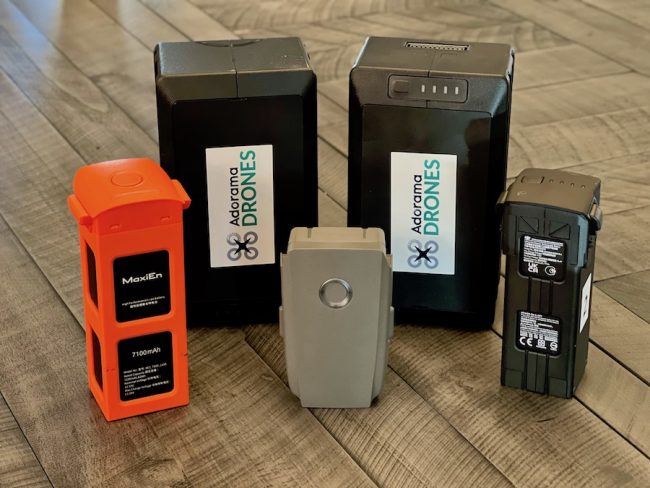Drones depend on reliable batteries to power them during flight time. Maintaining batteries for commercial drones is critical for optimal performance.

“No drone flies without a battery,” said CJ Smith, category marketing manager for drones at Adorama Business Solutions, which provides technology products for private companies, higher education and government agencies. “There are a few exceptions—tethered drones—but basically every drone needs batteries.”
Drones can fly between 35 and 40 minutes based on current battery technology. That is why maintaining and storing batteries properly is a crucial part of drone operations.
“Flight time is one of the biggest limitations for drone technology right now, so you want to have a lot of batteries and you want to have them charged up,” Smith said. “You don’t ever want to be in a situation where the battery is the reason you bring your drone back down and stop your mission.”
Best Practices for Battery Use
Because of the constraint on flight times, drone operators should bring at least five extra battery packs to the field and swap them out as needed, said Jake Mackey, drones specialist at Adorama. That is important for public safety agencies deploying drones for search-and-rescue missions or wildfire containment, which need extra batteries on hand so that they can maintain continuous flight time.
For long-term drone deployments, operators need to be able to charge batteries in the field, which can be done either from a vehicle charging system or from a generator. It can take anywhere from 30 to 90 minutes to charge a drone battery.
“It depends on the capacity—very large batteries could take an hour to charge,” Mackey said. “But the new emerging battery technology is able to charge quicker.”
After a drone mission, batteries should not be discharged at less than 20% of voltage; anything less than that can permanently damage the battery’s chemistry.
Once the batteries are removed, they should be kept at room temperature. “Allow them to naturally cool before you charge them,” Mackey said.
One common mistake drone operators make is storing batteries at full power, which can disrupt the chemistry of the battery. The ideal level to store drone batteries is 40%.
Future of Battery Technology
The majority of batteries used to power commercial drones are lithium polymer (LiPo). The advantages of these batteries are their high energy density, their power-to-weight ratio and their safety record.
Lithium ion (Li-ion) batteries, however, are becoming more popular. They have a different chemistry and a higher life expectancy than the LiPo batteries, Mackey said.
Another new development in the industry involves smart batteries, which automatically regulate internal voltage. DJI, for example, has created a smart battery discharge system that will reduce the voltage after a few days so that the battery is stored at the correct capacity.
Hydrogen fuel cells are also becoming an option for the industry, and potentially offer extended endurance. Because sourcing hydrogen is currently difficult, however, fuel cells make up a tiny fraction of the market. “Hydrogen is very small—less than 1 percent,” Mackey said about today’s market share.
Tips for maintaining drone batteries:
• Always store batteries at 40 percent of capacity and at room temperature
• Always fully charge batteries before using them
• Only use a charger designed for charging lithium polymer cells
• If you leave your battery idle for a week or more, store at 40% to 60% capacity
• Try not to deplete the battery below 20%. Plan to land your flight with 20% remaining battery.
• Make sure your batteries have had the chance to fully reach room temperature before charging
• Multiple batteries or hubs should involve intelligent chargers that balance and maintain proper voltage and temperatures while charging
• Label your batteries with date purchased and number of cycles used to balance usage.
All drones should have the following battery solutions:
• Hard case for travel
• Safe bag for batteries
• Battery hub to charge multiple batteries simultaneously
• Battery charger system
• At least five sets of extra batteries to use when cells are charging.
Source: Adorama Business Solutions






